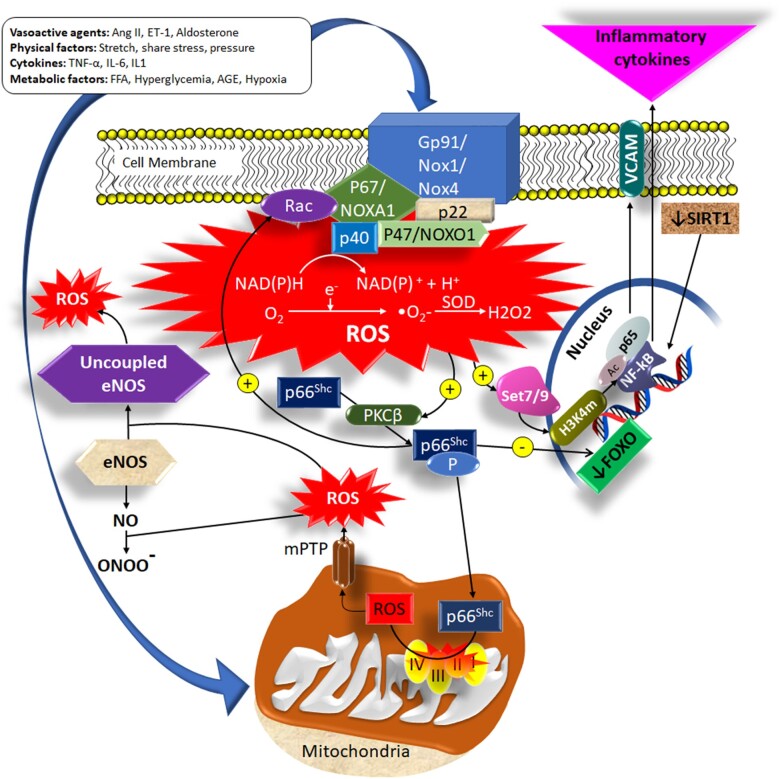Figure 1.
Major pathways leading to ROS-mediated microvascular dysfunction. Nox isoforms and mitochondria represent major systems accounting for the dynamic regulation of ROS production within the microvascular wall. The activation of Nox leads to ROS production and triggers p66Shc phosphorylation and translocation within the mitochondria, where it further promotes ROS generation by altering the function of the mitochondria respiratory chain and opening the mitochondria permeability transition pore. In turn, p66Shc activation stimulates the activity of Nox, thus generating a vicious cycle that amplifies ROS production. The increased concentration of intracellular ROS promotes the transformation of NO in peroxynitrite radicals and uncouples the eNOS, switching its activity from a NO to a ROS producing enzyme. Epigenetic modifications commonly detected in ageing, such as a reduced SIRT1 expression, sustain a further increase in intracellular oxidative stress, reducing the expression of antioxidant enzymes (secondary to FOXO inhibition) and promoting pro-inflammatory cytokine production through activation of the NF-kB and expression of adhesion molecules. NO, nitric oxide; NoX, NADPH oxidase; ROS, reactive oxygen species.

